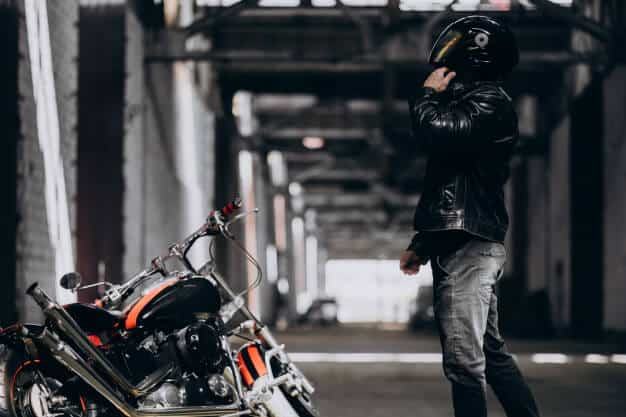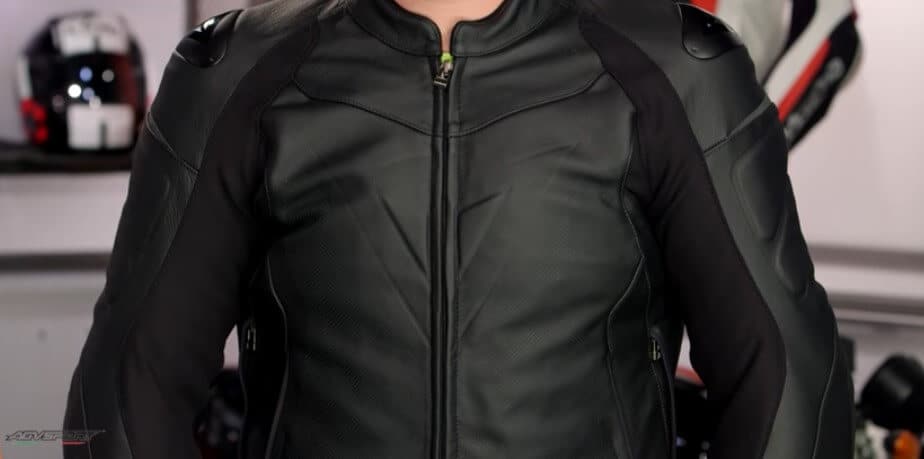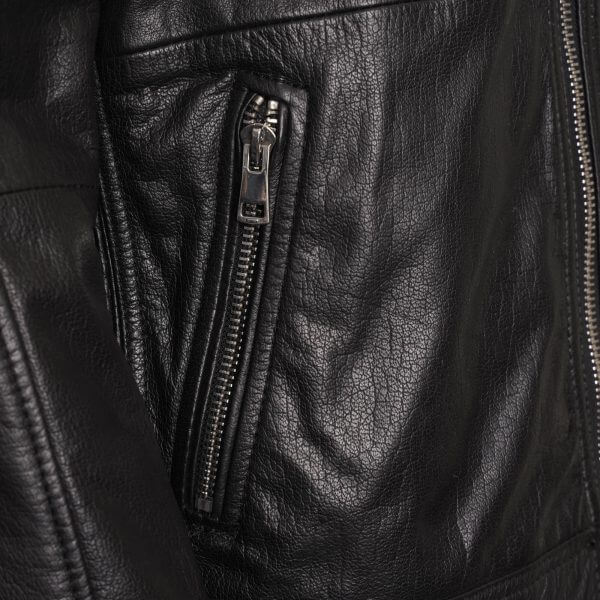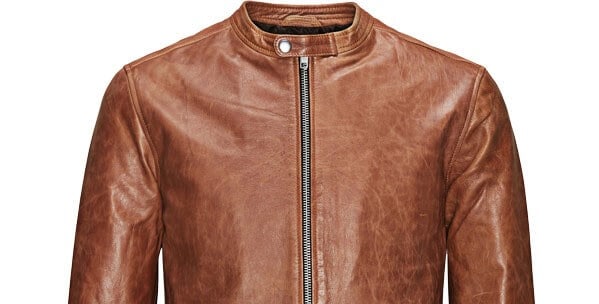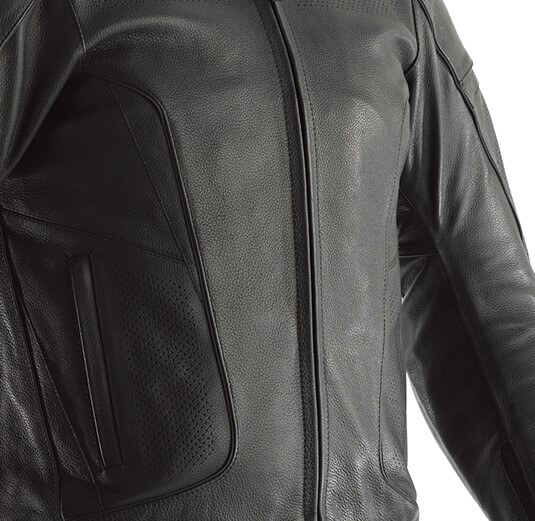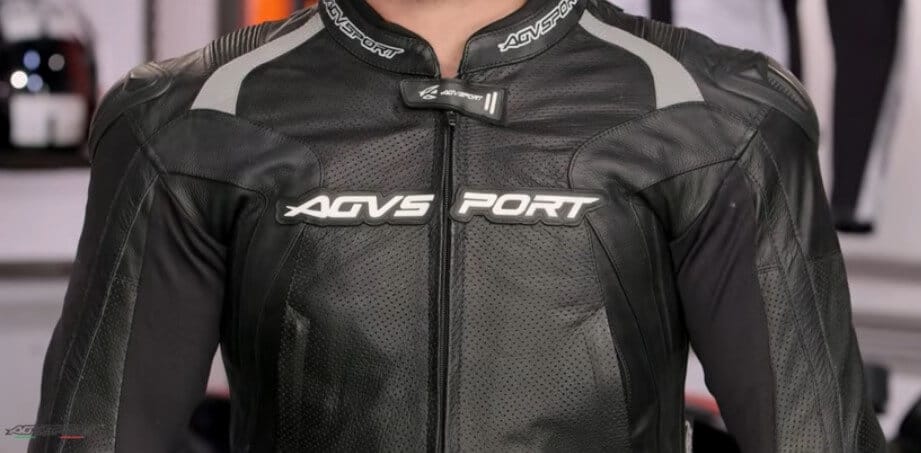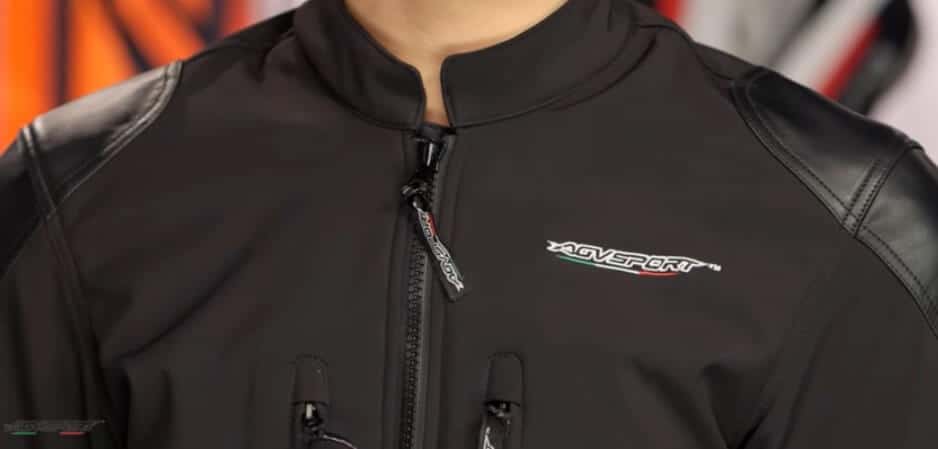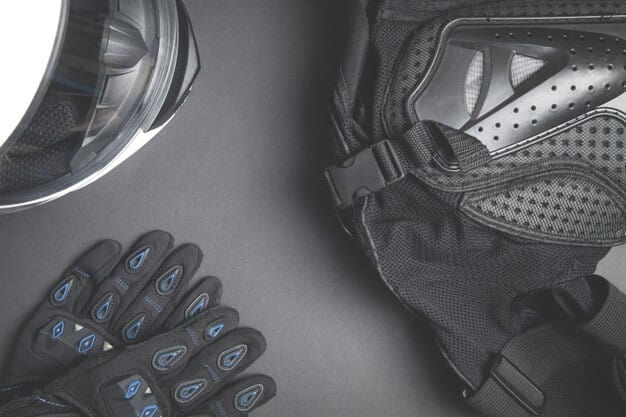How Is a Leather Jacket Different from a Textile Jacket?
Motorcycle enthusiasts will agree with me that the first thing you learn when buying your first motorcycle jacket is that there are two basic options. You can either choose a leather or textile jacket. And if you’re clueless about the best material to pick, you might end up with an option that might not be ideal.
Stereotypically, the image of a biker includes a black leather jacket. In fact, most riders prefer leather over any other type of material. But what if textiles provide similar or better results?
The answer to this question isn’t so simple and will depend on where you plan on riding, the kind of riding you plan to undertake, or how fast you want to ride. The type of weather conditions you plan to ride in is an important consideration too.
For this post, we’re going to compare leather vs. textile motorcycle jackets to help you select the best riding gear for your needs, comfort level, and budget.
Leather for Motorcycle Jackets & Suits – Cowhide vs. Goat vs. Buffalo vs. Kangaroo
Cowhide, buffalo, and goatskin are the most popular types of leather. Let’s look at each one’s distinct personality:
-
Cowhide:
Cowhide is the most durable and widely used leather on the market. Since the 1920s, it has been the preferred material for traditional motorcycle jackets and suits due to its strength, thickness, and durability.
Cowhide is water and dirt-resistant, as well as provides good weather protection. Your cowhide leather jacket will feel like a second skin once you’ve worn it a few times.
-
Buffalo:
Buffalo leather is robust, resilient, and an ideal material for motorcycle jackets and protective gear, which is quite alike cowhide. Unlike most cowhides, it has a characteristic pebbled grain that gives any leather jacket a tough look. Buffalo is a preference for artisans for its unusual appearance as well as its durability.
You may also like:
Best Motorcycle Jacket Leather for Longevity and Protection
-
Goatskin:
Apart from a popular option for motorcycle jackets and suits, the U.S. Navy and Air Force use goatskin in their G-1 and A-2 aviator coats because it’s softer and lighter than cowhide while still being quite durable.
It is silky, supple, and feels like an old favorite from the first wear, just like deerskin. It has a distinctive pebble grain as well.
-
Kangaroo Skin:
Kangaroo skin combines cowhide’s sturdiness and durability with lambskin’s smooth, lightweight feel. It is generally thicker and heavier than lambskin and soft and smooth at the same time, establishing an excellent balance between utility and fashion.
Is Leather the Best Material for a Motorcycle Jacket?
Yes, leather is, without a doubt, the best material for a motorcycle jacket. Its ability to offer excellent impact and abrasion resistance as well as overall durability makes it the ideal option. Interestingly, most rides prefer leather to other materials because of its traditional look, which keeps you stylish and looking sharp for years to come.
However, it comes more fitted and not as relaxed as other options, taking a while to break in. But when treated properly, its comfortability is unmatched and lasts quite a long time. What’s more, leather isn’t always the best, especially in extreme weather conditions. In hot weather conditions, it appears heavier and needs treatment for wet weather. Don’t expect to come home dry in a downpour.
Regardless, most leather motorcycle jackets have perforated panels around the arms, chest, and back to allow airflow. They also have stretch panels to enhance comfort and freedom of movement. Buying a leather jacket is a huge financial investment for motorcycle enthusiasts.
1. Pros of Leather Jackets
- Best impact/abrasion resistance
- Most leather jackets have back, elbow, and/or shoulder armor
- Stylish and durable
2. Cons of Leather Jackets
- Needs conditioning and treatment after exposure to elements
- Requires time to break-in
- Higher-end leather jackets, with outstanding features, are highly-priced
- Not the best choice for heavy rain riding
How About a Textile Jacket? What Are Its Advantages and Disadvantages?
Although relatively new on the scene, textile gear has been around for a while. Thanks to features like room for armor, breathability, and waterproofing, you can do a lot with a textile jacket.
In fact, nothing matches textile jackets when it comes to waterproof performance, and you can slip textile jackets over your everyday wear, including a leather jacket.
Textile ranks highest in ventilation, and you can easily find the gear that works all year round regardless of climate or weather. Also, most textile jackets offer additional storage areas for safekeeping and pockets.
However, it’s not the best when it comes to abrasion or impact performance, and requires the use of CE-approved armor for elbows, shoulders, and the back pad for jackets and hips, and knee plates for pants.
What’s more, most textile jackets include an integrated armor system while others feature extra padding with available armor placement, meaning you must buy the extra reinforcements.
One thing to note, however, is that more manufacturers have incorporated new materials, giving today’s textile gear the best abrasion resistance in its class, but it still doesn’t match the leather.
1. Pros of Textile Jackets
- Versatile, offering more freedom and room
- Light
- Waterproof
- Comfortable
- Wide range in pricing
2. Cons of Textile Jackets
- Some garments include armor while others don’t
- Not long-lasting
How Is a Textile Jacket Different from a Leather Jacket?
When looking at leather versus textile motorcycle jackets, there are clear positives and negatives to each. They include:
1. Cost
On the cost metric, leather is always going to come out as the more expensive choice than textile. Depending on several factors, such as the type of animal hide used, a motorcycle leather jacket can cost up to $10,000. But there are also cheaper and genuine options for around $200. You can find good protective riding gear for under $100, too.
Since textile jackets are more affordable than leather ones, you can purchase a waterproof jacket with an insulated liner to serve you during the cold season and a mesh jacket for the hot summer days. Maybe, you can purchase both for almost equal to the price of a single leather jacket.
Typically, finding inexpensive and authentic jackets can prove to be a daunting task. If you stumble upon a deal that might seem to be “too good to be true,” ensure you enquire with other sources to find out its legitimacy before making your purchase.
2. Protection
Motorcycle riders can sustain potentially life-threatening injuries if they crash with the required protection gear. Although leather jackets are not a foolproof means to provide you with 100% protection, they certainly lower your risks of injury.
They offer a thick protection layer between the tarmac and your body. It is, in fact, one of the main reasons many riders choose leather jackets over the textile.
Conversely, that does not mean that textile jackets lack protective layers. Today, the technology used in making them is quite similar to the double-layered jackets used decades ago – before armor became common.
Critical impact areas come with different kinds of weight materials to improve abrasion resistance. Also, they are lighter than leather jackets and still provide the same protection in the most needed areas.
3. Overall Performance
Both leather and textile jackets have the same kind of armor and external hard sliders on the elbows and shoulders. Technically, when you crash, you will more likely slide than tumble; hence, the main reason for hard sliders on the shoulders and elbows. Even better, they can integrate the latest protection offered by wearable airbags.
By and large, think of leather as a bit needy and a little more high-maintenance and when cared for you, just might get a soul mate. On the other hand, textile gets pretty much up for anything and helps in a pinch but is easily replaceable when necessary.
Whether you go for textile, leather, or a combination of both, wear what makes you feel protected against the worst of scenarios and comfortable in the best of conditions.
What Should I Look for When Buying a Motorcycle Jacket?
Choosing the best motorcycle jacket will require you to put into consideration several factors before deciding on whether to go with textile or leather as shown below.
- Always consider waterproof proof – regardless of how and where you ride
- Consider the price. Click here to find out reasonably-priced jackets
- Check for the ability of waterproof and thermal liners
- The shoulders and elbows should have relief stitching, stretch panels, or gussets
- Look for a Napoleon pocket
- Don’t forget to consider the armor
Verdict: Leather vs. Textile Motorcycle Jacket: Which Is the Best?
Well, both options have come a long way in terms of features, protection, and comfort, and they will serve the required purpose in motorcycle riding.
However, if you are aiming for a motorcycle jacket capable of providing maximum versatility at a fair price, you can opt for textile. But if you are like most riders, you can choose to go with the traditional all-around leather jacket or both.
All you need to do is an ideal option – based on your needs. You will find that, in some areas, leather jackets might not suit you better than textile jackets would do.
Enjoyed the comparison? Follow our blog for more reads like this, and let us ensure you are always up to date with the latest deals and information about motorcycle apparel.
About the author: Michael Parrotte was the Vice President of AGV Helmets America, and a consultant for KBC Helmets, Vemar Helmets, Suomy Helmets, Marushin Helmets, KYT Helmets, and Sparx Helmets. In addition, he is the founder and owner of AGV Sports Group.

